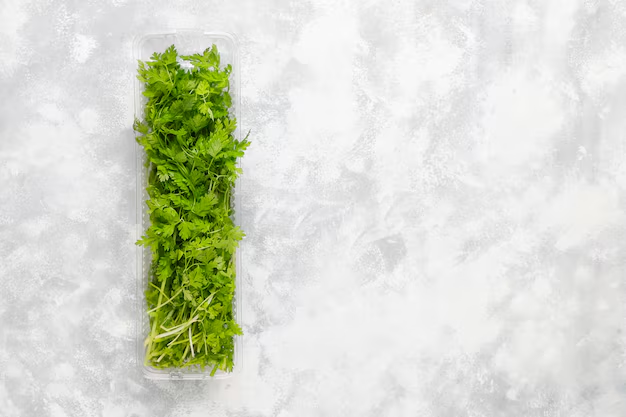Mastering Kale Storage: Keeping Your Leaves Fresh and Crisp in the Refrigerator
Kale, with its vibrant green leaves and superfood status, has become a staple in many kitchens. Whether you're blending it into smoothies, tossing it in salads, or baking it into chips, maintaining its freshness is crucial for preserving its nutritional benefits and taste. But how can you ensure that your kale stays crisp and fresh while chilling in your refrigerator? Let’s dive deep into effective strategies to maximize the shelf life of kale, preventing wastage and keeping those leaves enticingly fresh.
The Science of Freshness: Understanding Kale's Needs
Kale is a hardy, leafy green known for its resilience. However, like any green, it has its storage challenges. A key factor is moisture balance. Too much moisture can lead to wilting, while too little can cause dehydration. When storing kale, the goal is to maintain an optimal balance that preserves its texture and nutrient profile.
Why Freshness Matters
- Nutritional Value: Fresh kale is rich in vitamins A, K, C, and minerals. Ensuring its freshness means you're retaining its health benefits.
- Taste and Texture: Fresh kale boasts a crisp texture ideal for a variety of dishes.
Prepping Your Kale: Washing and Drying
Before storing, properly wash and dry your kale. This is an essential step in preserving its freshness:
- Washing the Leaves: Rinse under cold water to remove dirt and pesticides. If you have particularly dirty leaves, you may wish to soak them briefly.
- Drying Thoroughly: Use a salad spinner to remove moisture effectively. If you don’t have one, pat them dry using clean kitchen towels or paper towels. Ensuring your kale is dry before storage is critical to preventing mold and wilt.
Pro Tip:
For the best results, consider separating the leaves from the stems and drying them individually. This ensures thorough drying and helps in portion control for later use.
Storing Kale: The Right Method Makes a Difference
Once your kale is cleaned and dried, choosing the right storage method is key. Below are some tried-and-true techniques that help keep kale fresh in the refrigerator.
Basic Storage with Plastic Bags
- Preparation: Place the dry, cleaned kale leaves in a clean plastic bag.
- Moisture-Control: Slip a piece of paper towel into the bag to absorb excess moisture.
- Seal It: Gently press the bag to remove air and seal it, ensuring minimal air exposure without crushing the leaves.
Using an Airtight Container
For those who prefer not to use plastic bags, an airtight container offers a viable alternative:
- Layer with Paper Towels: Line the bottom of the container with a paper towel to absorb moisture.
- Load the Leaves: Place kale inside, in layers, using additional paper towels between layers.
- Seal and Store: Close the container tightly and store it in the crisper drawer of your refrigerator.
Advanced Techniques for Enthusiasts
With the basics covered, let's delve into some advanced strategies that cater to kale enthusiasts who love experimenting in the kitchen.
Blanching for Longer Shelf-Life
Blanching is a technique that involves briefly boiling kale before freezing or storing. This process helps retain its vibrant color and nutritional content.
- Blanching: Boil water in a pot, add kale leaves for 2-3 minutes, then quickly transfer them to an ice bath to halt the cooking.
- Dry and Store: Once cooled, dry thoroughly and store using the methods mentioned above.
Using Vacuum Sealers
For those with vacuum sealers, this gadget can significantly extend the fridge life of kale.
- Preparation: Follow the standard cleaning process.
- Sealing: Place leaves into vacuum seal bags and remove air.
- Store in Fridge or Freezer: This method is highly effective for long-term storage.
Avoiding Common Mistakes
Many people make small errors that can affect how long their kale remains fresh. Here are some pitfalls to avoid:
- Overcrowding: Stuffing too much kale into one storage container can bruise the leaves.
- Skipping the Wash: Neglecting to wash before storage can lead to contamination and spoilage.
- Ignoring Moisture Control: Failing to dry leaves or forgetting the paper towel can lead to wilting.
Quick Tips for Success:
- Refresh wilted kale by soaking it in ice-cold water for a few minutes.
- Always store kale away from fruits like apples and bananas that produce ethylene gas, which can speed up ripening and spoilage.
Practical Tips for Kale Usage: Make the Most of Your Greens
To make the most out of your preserved kale, plan your meals around your stocks. Here are some creative ideas:
- Kale Smoothies: Blend with fruits and a splash of almond milk for a quick nutrient boost.
- Crispy Kale Chips: Sprinkle with olive oil and seasoning, then bake for a healthy snack.
- Hearty Soups and Stews: Throw handfuls into simmering pots towards the end of cooking.
Summary Section: Key Takeaways for Kale Storage 💡
- Wash: Always wash and dry thoroughly before storage.
- Use Paper Towels: Incorporate paper towels to manage moisture effectively.
- Choose the Right Storage: Opt for airtight containers or sealed plastic bags.
- Avoid Common Mistakes: Be mindful of overcrowding and moisture control.
- Plan Your Meals: Regularly use kale to reduce waste and enjoy fresh greens.
By following these strategies, you're well on your way to enjoying the freshest kale possible. Remember, the key is in the preparation, moisture control, and choosing the right storage method. Equipped with this knowledge, you can confidently keep your kale deliciously crisp and ready for the next meal. Happy cooking! 🥬
